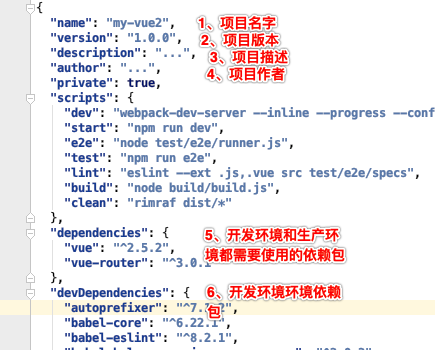两个很详细的shell 实例 一般编程步骤 现在我们来讨论编写一个脚本的一般步骤。任何优秀的脚本都应该具有帮助和输入参数。并且写一个伪脚本(framework.sh),该脚本包含了大多数脚本都需要的框架结构,是一个非常不错的主意。这时候,在写一个新的脚本时我们只需要执行一下copy命令: cp framework.sh myscript 然后再插入自己的函数。 让我们再看两个例子: 二进制到十进制的转换 脚本 b2d 将二进制数 (比如 1101) 转换为相应的十进制数。这也是一个用expr命令进行数学运算的例子: 复制代码 代码如下: #!/bin/sh # vim: set sw=4 ts=4 et: help() { cat < b2h — convert binary to decimal USAGE: b2h [-h] binarynum OPTIONS: -h help text EXAMPLE: b2h 111010 will return 58 HELP exit 0 } error() { # print an error and exit echo \”$1\” exit 1 } lastchar() { # return the last character of a string in $rval if [ -z \”$1\” ]; then # empty string rval=\”\” return fi # wc puts some space behind the output this is why we need sed: numofchar=`echo -n \”$1\” | wc -c | sed \’s/ //g\’ ` # now cut out the last char rval=`echo -n \”$1\” | cut -b $numofchar` } chop() { # remove the last character in string and return it in $rval if [ -z \”$1\” ]; then # empty string rval=\”\” return fi # wc puts some space behind the output this is why we need sed: numofchar=`echo -n \”$1\” | wc -c | sed \’s/ //g\’ ` if [ \”$numofchar\” = \”1\” ]; then # only one char in string rval=\”\” return fi numofcharminus1=`expr $numofchar \”-\” 1` # now cut all but the last char: rval=`echo -n \”$1\” | cut -b 0-${numofcharminus1}` } while [ -n \”$1\” ]; do case $1 in -h) help;shift 1;; # function help is called –) shift;break;; # end of options -*) error \”error: no such option $1. -h for help\”;; *) break;; esac done # The main program sum=0 weight=1 # one arg must be given: [ -z \”$1\” ] && help binnum=\”$1\” binnumorig=\”$1\” while [ -n \”$binnum\” ]; do lastchar \”$binnum\” if [ \”$rval\” = \”1\” ]; then sum=`expr \”$weight\” \”+\” \”$sum\”` fi # remove the last position in $binnum chop \”$binnum\” binnum=\”$rval\” weight=`expr \”$weight\” \”*\” 2` done echo \”binary $binnumorig is decimal $sum\” # 该脚本使用的算法是利用十进制和二进制数权值 (1,2,4,8,16,..),比如二进制\”10\”可以这样转换成十进制: 0 * 1 + 1 * 2 = 2 为了得到单个的二进制数我们是用了lastchar 函数。该函数使用wc ?c计算字符个数,然后使用cut命令取出末尾一个字符。Chop函数的功能则是移除最后一个字符。 文件循环程序 或许您是想将所有发出的邮件保存到一个文件中的人们中的一员,但是在过了几个月以后,这个文件可能会变得很大以至于使对该文件的访问速度变慢。下面的脚本rotatefile 可以解决这个问题。这个脚本可以重命名邮件保存文件(假设为outmail)为outmail.1,而对于outmail.1就变成了outmail.2 等等等等… 复制代码 代码如下: #!/bin/sh # vim: set sw=4 ts=4 et: ver=\”0.1\” help() { cat < rotatefile — rotate the file name USAGE: rotatefile [-h] filename OPTIONS: -h help text EXAMPLE: rotatefile out This will e.g rename out.2 to out.3, out.1 to out.2, out to out.1 and create an empty out-file The max number is 10 version $ver HELP exit 0 } error() { echo \”$1\” exit 1 } while [ -n \”$1\” ]; do case $1 in -h) help;shift 1;; –) break;; -*) echo \”error: no such option $1. -h for help\”;exit 1;; *) break;; esac done # input check: if [ -z \”$1\” ] ; then error \”ERROR: you must specify a file, use -h for help\” fi filen=\”$1\” # rename any .1 , .2 etc file: for n in Array 8 7 6 5 4 3 2 1; do if [ -f \”$filen.$n\” ]; then p=`expr $n + 1` echo \”mv $filen.$n $filen.$p\” mv $filen.$n $filen.$p fi done # rename the original file: if [ -f \”$filen\” ]; then echo \”mv $filen $filen.1\” mv $filen $filen.1 fi echo touch $filen touch $filen 这个脚本是如何工作的呢?在检测用户提供了一个文件名以后,我们进行一个Array到1的循环。文件Array被命名为10,文件8重命名为Array等等。循环完成之后,我们将原始文件命名为文件1同时建立一个与原始文件同名的空文件。 调试 最简单的调试命令当然是使用echo命令。您可以使用echo在任何怀疑出错的地方打印任何变量值。这也是绝大多数的shell程序员要花费80%的时间来调试程序的原因。Shell程序的好处在于不需要重新编译,插入一个echo命令也不需要多少时间。 shell也有一个真实的调试模式。如果在脚本\”strangescript\” 中有错误,您可以这样来进行调试: sh -x strangescript 这将执行该脚本并显示所有变量的值。 shell还有一个不需要执行脚本只是检查语法的模式。可以这样使用: sh -n your_script 这将返回所有语法错误。 我们希望您现在可以开始写您自己的shell脚本,希望您玩得开心。







